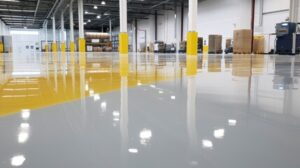Massage therapists use their hands, fingers and elbows to manipulate soft tissues and apply pressure to promote relaxation. They also communicate with clients to assess their needs and respond appropriately.

If you are interested in a career as a massage therapist, narrowing down your school options is a good place to start. Narrow your search by checking out online reviews and examining state requirements for massage therapy programs. Visit https://www.flowstate918.com/ to learn more.
Many people use massages as a way to pamper themselves or treat a specific condition such as back pain, migraines, muscle tension or arthritis. But, it is also a powerful tool in relieving stress. The body and mind are constantly reacting to a variety of physical and psychological situations, and this can often produce anxiety and depression.
The good news is that there are many ways to deal with these feelings. One of the best ways is to get a massage. Studies have shown that getting a massage can decrease your blood pressure and increase your levels of serotonin and dopamine, which are neurotransmitters that help to stabilize your mood.
It can also boost the immune system. Chronic stress can weaken your immune system, which makes you more susceptible to illness. But regular massage can increase your production of immune-boosting T-cells. This helps to prevent you from getting sick, as well as reduce the severity of a sickness that you do catch.
In addition, a massage can increase your circulation, which also helps your overall health and wellness. It can also improve flexibility and range of motion in the joints. This is especially true for the temporomandibular joint (TMJ) in the jaw, which can be affected by both mental and physical stress.
A massage is the rubbing of soft tissues, usually muscles and ligaments, using a light touch with the hands, forearms, elbows or feet. There are at least 80 different types of massage, with some being very gentle and others more intense.
During a typical massage session, the therapist will apply lotion or oil to your body before working on your muscles. They will use gliding and kneading strokes to relax the muscles, improving the flow of blood to them and relieving the tension. Depending on the type of massage, the therapist may use friction and stretching to strengthen the muscles.
It is important to drink water after your massage, to make sure you stay hydrated. You may also feel a little disoriented after your session, which is normal. This feeling is due to a drop in cortisol and increased activity of the parasympathetic nervous system, which promotes relaxation and rest.
Helps Relieve Pain
Massage is a hands-on therapy in which practitioners use their fingers, palms, arms, forearms and elbows to manipulate the soft tissue of the body including the muscles. There are at least 80 different massage techniques ranging from gentle to intense. Massage is a highly effective way to break the stress and pain cycle. A good massage can reduce cortisol levels, lower your heart rate and blood pressure and increase serotonin and dopamine to improve mood and promote relaxation.
Injuries such as muscle strains and sprains, and even common problems like tendonitis can cause pain, inflammation, stiffness and diminished range of motion. Massage therapy has been shown to help alleviate these conditions by reducing the production of inflammatory cytokines and improving circulation. In fact, one study found that massage can decrease cytokines by 31% and significantly improve range of motion and strength in the affected area.
Research has also found that massage can stimulate the nerves that report pain in injured tissue. These nerves are called nociceptors and send pain signals to the brain. Massage can interrupt or overwhelm these signals by stimulating a number of other nerves that can send a competing message to the brain and diminish the perception of pain. For example, rubbing and friction can stimulate the cutaneous nerves (responsible for skin sensation), light touch can stimulate proprioceptors (that report the position of joints so you can balance) and compression can activate mechanoreceptors which respond to pressure.
Another reason why massage helps relieve pain is that it increases blood flow to the affected area. This increased circulation will bring nutrients to the affected tissue and flush out metabolic waste. It can also help prevent fluid build-up and reduce swelling. Massage can improve vascular integrity and encourage the release of vasodilators such as histamine and acetylcholine which further enhances blood flow and reduces swelling.
During the consultation process, your massage therapist will ask you about your symptoms and goals for the session. This information helps them plan a massage that will benefit you. It also allows them to communicate with your other health care providers, such as a physical therapist or yoga instructor, so that the treatment can be coordinated.
Enhances Well-Being
Many people associate massages with luxury resorts and hotels and it’s true that they do ooze relaxation. However, the benefits of massage go beyond just being luxurious and can actually improve your overall health and well-being.
Massage is the manipulation of soft tissue such as the muscles. It involves gliding strokes, kneading and tapping techniques on the body’s surface and deeper layers of muscle and connective tissue. There are at least 80 different massage modalities; some are gentle while others are more intense. A good massage therapist will respect your comfort level and provide clear instructions for you to follow during the session. They will also ensure that you have privacy and will knock before entering your room to let you know they are ready to begin.
A good massage can stimulate the production of the body’s natural “feel-good” hormones, boosting mood, relieving stress and anxiety and encouraging feelings of happiness, peace, love and connectedness. This enables individuals to build their personal resources so that they can cope better with the daily challenges of life and prevent mental health problems from developing.
Getting regular massages can help reduce the symptoms of chronic pain and also decrease the need for medication and other pharmaceutical treatments. It can even prevent the recurrence of the same kind of pain or injury by helping the individual maintain flexibility and movement of the affected areas.
It can also boost the immune system and promote a healthy cardiovascular system. Moreover, it can help relieve the symptoms of depression and anxiety by improving blood circulation and reducing tension in the muscles. Besides that, it can improve the quality of sleep and can reduce the frequency of anxiety attacks.
In a world where stress has become an all-too-familiar companion, it is important to find ways to cope with the physical and emotional demands of everyday life. Massage therapy is a natural stress relief that has been proven to be effective in combating the effects of everyday stress.
It is essential to find a reputable and experienced massage therapist who can deliver the desired results. Always check a therapist’s credentials before hiring them and ask for references. Make sure that they are fully licensed and certified in the technique you want to use and have experience treating your specific needs and concerns. In addition, always communicate with your therapist throughout the session and let them know if you feel any discomfort or have any specific preferences.
Enhances Sleep
Massage therapy helps combat insomnia, relieves sleep apnea symptoms, soothes restless leg syndrome and alleviates headaches, to name just a few of its benefits. It can even improve your quality of sleep, and research suggests that regular massage sessions can contribute to a natural and consistent sleep pattern.
Studies suggest that massage can boost the production of serotonin, which plays a role in regulating sleep cycles and improving sleep quality, while reducing the production of cortisol, a stress hormone. It also increases the release of oxytocin, which promotes feelings of relaxation and well-being. As a result, many people find that they have an easier time falling asleep after a massage and are able to stay asleep longer at night.
In addition, some massage techniques, particularly deep tissue, trigger muscle relaxation and a reduction in pain and tension. As a result, regular massage may help reset the body’s sleep cycle and enhance REM (rapid eye movement) sleep. This is a crucial stage of the sleep cycle, as it’s associated with memory consolidation and restorative processes.
Additionally, if you suffer from a chronic pain condition like arthritis or back problems, massage can significantly reduce the tension and stiffness in your muscles, helping you fall and stay asleep at night. In fact, a study of postmenopausal women who suffered from insomnia found that massage increased the amount of time they spent in deeper stages of sleep.
When you book a massage, be sure to discuss your sleep issues with your therapist, so that they can tailor the session to your needs and help you get the best results. It’s also important to establish a consistent schedule for regular massage, as this can aid in establishing a healthy sleep routine.
In addition to massage, there are several other lifestyle elements that can significantly influence your sleep, including a regular exercise regimen and healthy diet. Practicing good sleep hygiene, such as maintaining a regular sleep schedule and avoiding caffeine and heavy foods in the hours leading up to bedtime, can also be helpful. Adding a regular massage to your health regimen can enhance your ability to fall and stay asleep, boosting the impact of your other healthy habits.








